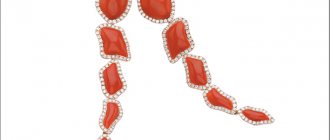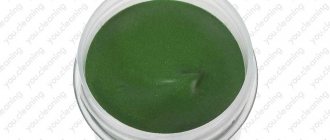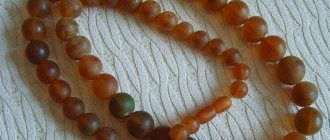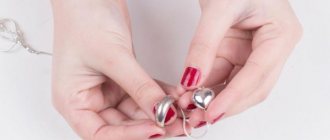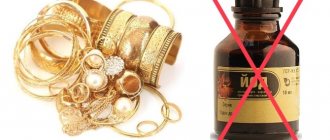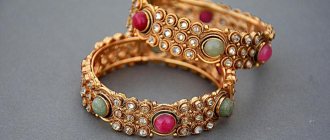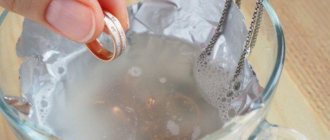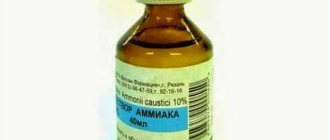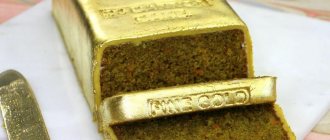Gold products tend to tarnish. The appearance deteriorates under certain conditions, for example, when they are exposed to an aggressive environment. However, this does not mean that the service life of the jewelry has expired. It is permissible to consider available means to restore the properties of the metal. One option is ammonia. It is used diluted or mixed with other components. You just need to choose an effective and fairly safe way to clean gold with ammonia. In order not to spoil the product, you should correctly determine the concentration of the product.
Ammonia and ammonia: what is the difference and what is the strength
It is a mistake to believe that ammonia and ammonia are synonyms, names of the same chemical substance. They have similar properties, but different intensity of impact on precious metals. Ammonia is a compound of nitrogen and hydrogen in gaseous form. It can turn into liquid at room temperature and a pressure of 8.5 atmospheres.
Ammonia in gaseous form participates in the biological cycle, but a pure substance of high concentration is toxic, has a poisonous, suffocating and even neurotropic effect. In comparison, ammonia is used much more widely. It is distinguished by a slightly aggressive effect on humans. The full name is ammonia.
This is an aqueous solution of ammonia, or more precisely, ammonium hydrate obtained from it (concentration - 10-25%).
Ammonia and ammonia for cleaning gold products
Home care for gold jewelry and accessories
It is recommended to store jewelry in a dark, dry place.
To maintain the spectacular shine of gold jewelry and prevent the appearance of plaque:
- Do not allow the product to come into contact with alkali-containing substances and various acids.
- When cleaning, wear protective gloves or remove jewelry first.
- Do not expose products to solvents or other aggressive substances, including nail polish remover.
- Protect gold from paints and abrasives.
- Do not expose to high temperatures or ultraviolet radiation.
If accessories become wet, they must be dried thoroughly with a soft cloth. After bathing in sea water, the jewelry is washed with fresh water. It is not recommended to keep jewelry en masse in a box: friction creates microcracks, which quickly absorb dirt.
Gold refining is required not only for decorative purposes. Dirt on jewelry is harmful to health. It can cause inflammatory and allergic reactions.
Is it possible to clean gold using ammonia, is ammonia safe: advantages and disadvantages of the method
Considering the difference in properties and level of aggressiveness when exposed to materials and living beings, it is best to clean gold with ammonia, which has been further diluted. In this case, the original color of the metal is restored and other properties of the product are preserved. Pure ammonia is not used in everyday life - it is a gas. If it is dissolved in water, after some time the substance will lose its properties. What will remain is just technical fluid. For this reason, different recipes are used specifically based on ammonia.
Cautions from experts
If there are coral, amber or pearl stones in the products, cleaning them with ammonia is strictly prohibited! You can deteriorate the condition and quality of the stone, making its appearance unattractive. Do not keep gold jewelry in liquid for too long. Do not use a hard brush. Scratches may occur. By following the warnings and tips, you can make your favorite jewelry shine brightly and delight you with its appearance, as well as surprise others. The main condition is regular cleaning and systematic care.
Safety precautions when working with ammonia and ammonia at home
When choosing a method for cleaning gold with ammonia, safety measures are also studied:
- prepare gloves made of impermeable material (rubber), prepare a respirator or mask, and, if possible, wear safety glasses;
- the room should be well ventilated when handling alcohol;
- Do not allow the product to come into contact with the skin or mucous membranes.
It is not recommended to manipulate ammonia for people with impaired vascular function (for example, diagnosed with VSD). They are especially susceptible to volatile components in the vapor.
How not to clean jewelry?
Some common cleaning methods can seriously damage your gold. The easiest way - cleaning the jewelry with powder and a toothbrush - can remove the top layer of metal. In addition to many scratches, you can get unprotected metal, which can enter into a chemical reaction with air, sweat, water, and everything that surrounds an ordinary person.
Why is this happening? Some types of gold require a protective layer, which increases strength, protects against corrosion, improves the appearance of the metal and protects people from allergic reactions. For example, white gold. Not everyone can afford a high-quality alloy containing platinum. The cheaper option of white gold includes nickel, which can cause skin irritation.
White gold is coated with a layer of rhodium; careless cleaning can damage it.
Due to the allergenic properties of nickel, its use is prohibited in many countries. Externally, these two alloys are difficult to distinguish. To avoid unnecessary “sacrifice” from nickel, the products are plated with rhodium. It improves color and protects human skin from the unpleasant effects of nickel. By removing this protective layer with aggressive cleaning agents, a person exposes himself to danger.
Many jewelry have precious stones. Contrary to all beliefs, they are very fragile and need protection even more than gold. A completely harmless composition for cleaning gold can cause irreparable harm to the precious stone. Cleaning gold jewelry with ammonia can also damage the stones.
TOP 8 recipes with ammonia for gold shine
The cleansing effect is obtained by using ammonia of different concentrations with different components. Due to this, the properties of the resulting solution change, as well as the level of aggressive action.
Refined gold diamond ring
Cleaning with pure ammonia
Sometimes you can use undiluted ammonia (take a ready-made solution). Features of using this tool:
- prepare the container: glass or ceramics are suitable, plastic is the most neutral materials, they do not react with active compounds that can be formed when ammonia interacts with metal;
- they immerse gold jewelry in ammonia that needs to be restored to attractiveness;
- the products are left for several minutes or hours (depending on the complexity of the contamination), possibly from evening to morning;
- Remains of the substance from the surface of the jewelry are removed with water;
- clean with felt.
Important! Pure ammonia can be considered as a means for cleaning gold items that do not contain stones, without matte coating, with a minimum amount of impurities.
Cleaning gold jewelry
Recipe with water
Cleaning gold at home with ammonia is most often done using a less concentrated product. This method is suitable for cases where the contamination is weak or moderate. Brief instructions:
- Take dishes: made of glass, polymer material.
- Prepare a solution. The proportions of ammonia and water, respectively: 1 tsp, 250 ml.
- The gold is left in the working solution for 30 minutes.
- The products are washed and then dried with a lint-free cloth.
A little more about professional gold cleaning products
In order not to have to make all kinds of compounds yourself, you can simply visit a jewelry store and purchase the necessary ready-made product, which you will use to clean precious metals. The most common and popular brands are considered to be:
| Product name | Description of the product |
| Mascot | Consists of a soft polishing paste, wipes and a special liquid composition. Apply after studying the attached instructions. |
| Sunny metal polish | The consistency resembles a cream paste. Soft, contains no abrasive components. |
| Aladdin | Suitable for removing dirt and plaque from white and yellow gold. Versatile. |
The concentration of ammonia in solution and its dependence on the gold standard
To increase the hardness of gold, various additives are used, since this metal is quite soft in its primary form. Often, among the auxiliary components, silver and copper are considered the main ones. Their concentration can be different, which determines the shade of the patina when the finished product comes into contact with an aggressive environment (cosmetics, biological fluids).
Abrasive agents are not used to clean high-grade gold. The risk of damage is higher. For jewelry made from different types of gold, the appropriate recommendations are used.
Concentration of aqueous solution of ammonia for red gold:
- sample 375 – the upper limit is 15%;
- sample 585 – average 13%;
- sample 750 – the weakest possible, less than 5%.
Summarizing
You should absolutely not mechanically remove dirt yourself, use abrasive cleaning powders, sharp tools, hard cloths and brushes - this can scratch the surface. Microdamages will become clogged with dirty particles, and the top layer will become dull, the shine will be lost forever.
Cleaning on your own and with improvised means cannot provide an ideal result. If the product is expensive, antique, with precious crystals, then you cannot save money, you need to contact a jewelry maker. Only a professional jeweler can polish and shine jewelry with high quality and safety.
Ammonia for gentle, effective cleaning of tough stains
When deciding whether ammonia is suitable for cleaning precious metals, you need to be aware of its effect on some items. For example, you cannot use aggressive substances to clean pearls, as well as other jewelry with organic stones. They will simply dissolve.
The ban also applies to products with a matte finish, since the surface layer is damaged. Ammonia cleans all other jewelry gently and in a short time.
Moreover, this product is used to eliminate the most complex contaminants.
Other folk methods
You don't have to suffer from the smell of ammonia or peroxide to clean yellow and rose gold. You can use other effective methods.
Available means
As the main component, you can use dishwashing detergent: a small spoon per 250 ml of water. Place a soft rag in the bottom of an enamel saucepan, dirty jewelry on top and fill them with the composition. Heat on low flame for 10 minutes. Then the jewelry must be removed and rinsed under running water, and wiped with a soft towel.
You can remove greasy deposits using a saline solution. You need three large spoons of powder in half a glass of water. After the grains are completely dissolved, place the products in the solution overnight. In the morning, you should thoroughly rinse and dry your jewelry.
You can deal with stains on gold using onion juice. Squeeze it onto a soft paper napkin, wipe the jewelry, rinse in running water and dry with a soft cloth.
Experimenting with unusual cleaners
You can clean the gold so that it shines brightly using foil mixed with two large spoons of soda. The last component is dissolved in a glass of water. The foil is placed on the bottom of a glass bowl, accessories are placed on top and “soda” is poured over. The purification process takes place over 12 hours, after which the gold is thoroughly washed and dried with a soft cloth.
Heavy contaminants are removed with borax solution:
- Soak a piece of natural silk in the mixture.
- Use light movements to polish the jewelry.
- Rinse thoroughly.
After washing, rub until shiny with a clean piece of silk.
Gently and without scratches clean the noble metal with lipstick. It should be a light shade. The lipstick is simply applied to the jewelry without stones and polished with a velvet scrap.
An egg-beer cocktail has an excellent effect on metal surfaces. Whisk an egg white with a spoon of beer, wet a piece of soft wool with it and simply remove dirt from gold jewelry.
Abrasives
Mechanical cleaning is not suitable for jewelry with stones.
If none of the proposed methods yielded results, and the dirt remains, mechanical action cannot be avoided. Abrasive pastes are not used for products with precious stones or coating, since the surface of jewelry and stones is very easy to scratch. Cubic zirconia stones especially suffer from such cleaning. But smooth rings and bracelets can be “offered” a kind of peeling.
To prepare an abrasive composition with your own hands, you will need:
- toothpaste without dyes;
- petrolatum;
- crushed chalk;
- grated laundry soap;
- water.
The resulting paste is applied to the decoration with a soft cloth. Once completed, you need to rinse the gold item to remove the Vaseline. At the end, the product is additionally rinsed under water and dried.
If you want more effective cleaning, you can add alcohol to the composition and slightly heat the water.
A good scrub for gold jewelry would be regular tooth powder. It is also diluted to a paste-like state:
- Mix four large spoons of powder with a little water.
- Dip your toothbrush into the resulting paste.
- Clean your earrings and rings with it.
- Rinse with clean water.
Don't forget to wipe your jewelry dry.
Sugar peeling is done for white gold accessories. The sweet product will quickly remove blackness and dirt. To do this, you need to dissolve two tablespoons of sugar in a glass of water. Place the products in sugar syrup for 10–12 hours: this will return them to their former shine and shine.
White gold is composed of an alloy of three metals: nickel, gold and copper. The coating is usually made of rhodium. The surface of such jewelry can wear off quickly, so they must be cleaned gently and gently.
Reviews
When I was getting ready to clean gold, I learned that jewelry with stones on it can be ruined. I began to look for a method that suits them. It turned out that “Fairy”, salt and ammonia can solve the problem. The components are taken in a 1:1 ratio. But just don't leave the gold in the mixture. It is applied to a ring or bracelet, and then cleaned with a soft brush, perhaps a toothbrush, for example. Moreover, salt is needed with small particles.
Angela Gusina, Krasnodar
Maria Ivanova, Moscow
I don’t bring my jewelry to such a state that it requires using “heavy artillery” means. From time to time I use peroxide and ammonia and add hot water. The result is good, most importantly, the reaction is fast.
I found an old ring, long lost at home. It had darkened and it was impossible to wear it. To clean, I took ammonia and shampoo - everything I found at home. The remedy works, but not quickly enough. I decided to also try a peroxide-based solution. This option removed the darkening in a shorter period of time.
Nadezhda Rimskaya, Leningrad
The main causes of contamination of gold items
Due to the impurities contained in the composition, jewelry fades and oxidizes over time.
There are many reasons why a noble metal loses its luster and natural beauty. The main ones:
- Copper, cadmium, zinc, silver, found in a gold alloy, make jewelry more resistant to external influences, but lead to oxidation and tarnishing. Unsightly dark spots appear on expensive things, especially when exposed to sea water.
- The human sebaceous glands constantly secrete secretions to soften the epidermis. When particles of this substance fall on the surface of jewelry, the gold becomes “washed out.” And if dirt sticks, it also gets darker.
- Particles of smog, exhaust fumes and street dust settle on the shiny surface and stick, giving the jewelry a cheap look.
Jewelry can also be contaminated with body care products. Fatty creams, makeup bases and decorative cosmetics are especially harmful.
Lipstick
This method is practically unknown and little used among the people, so everyone is very surprised when they hear about it for the first time. At first it is not entirely clear how this is possible, and people are skeptical about it. But there are people who have tested it on themselves and done it quite effectively.
Women often accumulate a large amount of used or outdated lipsticks, and these can be used to great advantage for jewelry.
Many people ask why lipstick and what is it about it that helps clean gold from dirt. This is because it contains titanium dioxide, which is what copes with dirt.
To clean, you need to take the lipstick and rub it on earrings, gold chain rings and other items, then wipe with a regular dry cloth and rinse under the tap. The result will appear immediately. This is one of the fastest and easiest ways to restore your jewelry to its original condition.
Processing gilding
When choosing what and how to clean items made of gold-plated silver, you need to take into account the characteristics of this material.
This coating is thin, which does not require the use of aggressive cleaning methods. In addition, it is also not recommended to use a hard toothbrush or sharp objects.
If gold plating loses its shine or develops blackness on its surface, experts recommend treating the surface with a solution containing alcohol (vodka, cologne). You need to wipe it without much physical effort. This may cause the gold plating to wear off.
In the absence of alcohol-containing products, it is possible to use turpentine or vinegar to clean gold-plated items (they must first be diluted in water).
After treating the surface of the gold plated coating with alcohol, you can wipe the surface with wine vinegar. To do this, water is mixed with 2 tbsp. alcohol and diluted in 25 grams of soap shavings. Add 6-7 drops of ammonia to the solution.
You can also achieve a positive result when cleaning gilding by using a bleach solution (1 tablespoon diluted in 1 liter of water).

